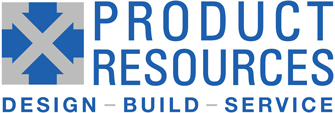Every manufacturing project must include some level of instruction on how the product will be assembled. This instruction needs to be detailed enough so that assemblers are clear about their actions and will not feel the need to improvise.
This assembly instruction will be provided through Assembly Documentation.
Examples of Assembly Documents
There are many kinds of documents which can be used to control the assembly of your product. Some of the more common ones are:
- Assembly Drawing – this is a graphical view of the product or assembly, with leader lines pointing to each component within the assembly and a circle with a number called a “bubble”. These bubble numbers are reference designators that tie back to numbers on the Bill of Materials (BOM) so that the component indicated can be identified.
-
- The Assembly Drawing may also have notes which indicate the order of assembly, when to apply thread locking material, fastener torque and other special instructions that are not obvious to the assembler. By the way, if you find yourself thinking “is this obvious enough?”, then it isn’t obvious and it needs a note – you are not building the product.
- Some assembly drawings have a table of material as part of the drawing. This is nice to have on the drawing, but we find it better to have a separate Bill of Materials. In a computerized manufacturing environment, the controlling Bill of Materials is a database table in an ERP or MRP system. The table on the assembly drawing may quickly be out of date if it omits any materials like hardware, thread-locker, labels, wire ties and other material that is usually not known until the manufacturing process design is complete.
- If the assembly is complex or needs the steps illustrated, the drawing can be multiple pages with step numbers to lead the assembler through the process. If this gets too cumbersome, consider adding an Assembly Procedure to the BOM and solve the problem with a text document augmented with photographs or the like.
- Assembly Procedure – this document is typically used for complex assemblies that need to be put together step by step. Many times, this document is used in conjunction with an Assembly Drawing. The procedure would have sections identifying:
-
- Tools, equipment, jigs, and fixtures required.
- Assembly Steps – a text description which uses Reference Designations (or Bubble Numbers) to identify components and ties back to the BOM. This may also include a photograph to help orient the assembler.
- If there are any tests or measurements that need to be made during the assembly, they would have a step and may have a reference to a test report where information can be recorded.
- Video Procedures – we have been given video presentations of assembly processes as the documentation for the assembly. In general, this has not worked well for a few reasons:
-
- Videos of a person – typically an engineer – building a product can leave the process open to interpretation unless the video is carefully edited. This can lead to confusion on proper assembly and harm consistency.
- Some actions or steps are done “behind the scenes” because they are considered obvious, but that leaves persons unfamiliar with the design in the dark.
- It is difficult to speak with precision about a part or process and the video does not lend itself to accurately and unambiguously identifying a specific component.
We would tend to write an Assembly Procedure from the video and use marked-up stills from the video to provide component identification. Procedures can be clearer and easily edited as clarifications need to be made.
